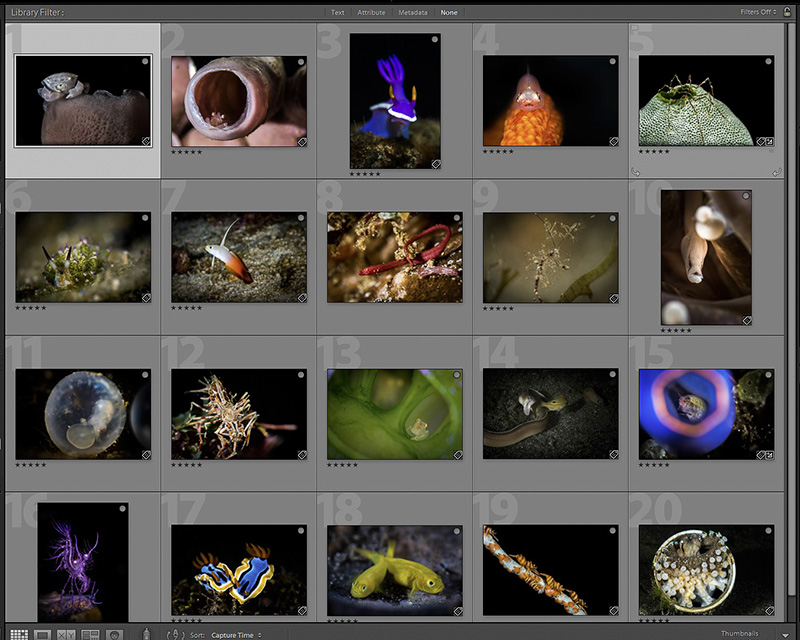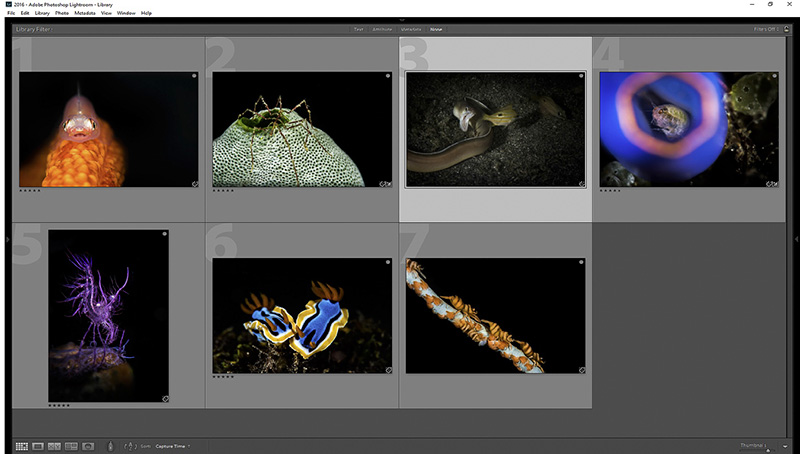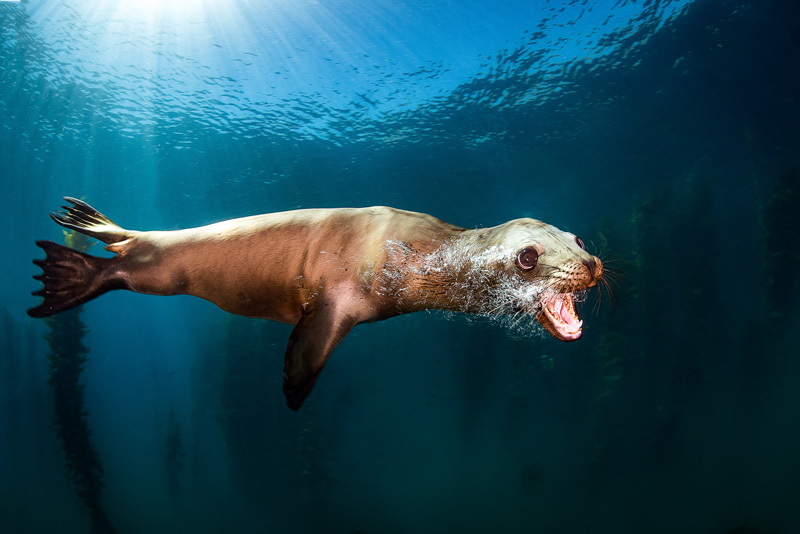How to Choose Award Winning Images
Competitions are a great way to find out how you measure up to all the great photography out there. Competitions are also a good way to get you some recognition for your work by getting your name out there among other members of the underwater photography community. Having a good understanding of what makes a good image is critical to being a top notch photographer, but it is also important to remember that some aspects of the judging process are subjective. The following guidelines will help you pick your best images for any competition.
Stand Out
First impressions are important, especially when hundreds or thousands of images have been submitted to the judges. There is always a preliminary elimination where the competitions judges will go through the images and select those they think are worthy of a second look. If your image stands out, and catches a judges eye, it is more likely to make it to the next round. When I prepare to choose my images, I put them all in the grid view of the Library module in Lightroom. Any software that allows you to see several images at once will work. Then I let my eyes wander around the images and I pay attention to which ones I look at several times. Of those I will pick five or six, and then use other techniques to eliminate from there.

Eliminate
Now let's say I chose these seven images, because they caught my eye the most:

Detach Yourself
Now it is time to eliminate further. Sometimes this part of the process is difficult because you have emotional attachments to some of the images even though they might not be winning material. For example, the hunting eel image was very exciting to me because I captured the thrill of the hunt. However, the image has several issues. It is too dark, part of the eel's body is cut off, and it isn't tack sharp. So I will eliminate that one. The same is true of the amphipod inside a tunicate. This was a difficult shot and although that carries some weight, a judge might eliminate the image because part of the tunicate is cut off, or that little piece of algae in the top right is distracting. You see, you want to choose images that are as technically perfect as possible so that a judge has no reason to eliminate it. I would also eliminate the wire coral shrimp because the wire coral does not go perfectly from corner to corner. That leaves us with these four images:

Fine Tune
Each of these images is composed well, lit well, the focus is tack sharp, they are eye catching and they tell a story or give a sense of character. The images are colorful and interesting. Certainly the level of difficulty in making the image is a factor. At this point, any one of them could be a winning image. The rules of many competitions might be specific to how much you can crop an image, or how much editing you can do. I would have to eliminate the goby on the whip coral if global changes are all that is allowed, because I had to remove a distracting bit of coral from the image with the healing brush tool in Photoshop. (A local tool). Now I will compare my image with its RAW counterpart and determine how much editing I have done. The less editing the better. If your image makes it to the semi-finals of a competition, the judges will often ask to see the RAW file for that very reason. You will want to submit images that have the least amount of editing and are sound in every other way to give yourself the best chance for a winner. Remember to be honest with yourself and try not to let your emotions override your judgement. Most of all, remember that when the Judges have a large number of images that are perfect in every way, the final call will be subjective, so if you feel you should have won with your image, try entering it again in a different competition. Maybe some other judge will choose it over the others.
This column originally published on Brook's blog, titled And the Winner Is...

A young sea lion barks at the camera. This image earned Brook the Best of Show award in the 2015 Socal Shootout.
RECOMMENDED ARTICLES
SUPPORT THE UNDERWATER PHOTOGRAPHY GUIDE:
The Best Service & Prices on u/w Photo Gear
 Visit Bluewater Photo & Video for all your underwater photography and video gear. Click, or call the team at (310) 633-5052 for expert advice!
Visit Bluewater Photo & Video for all your underwater photography and video gear. Click, or call the team at (310) 633-5052 for expert advice!
The Best Pricing, Service & Expert Advice to Book your Dive Trips
 Bluewater Travel is your full-service scuba travel agency. Let our expert advisers plan and book your next dive vacation. Run by divers, for divers.
Bluewater Travel is your full-service scuba travel agency. Let our expert advisers plan and book your next dive vacation. Run by divers, for divers.



































